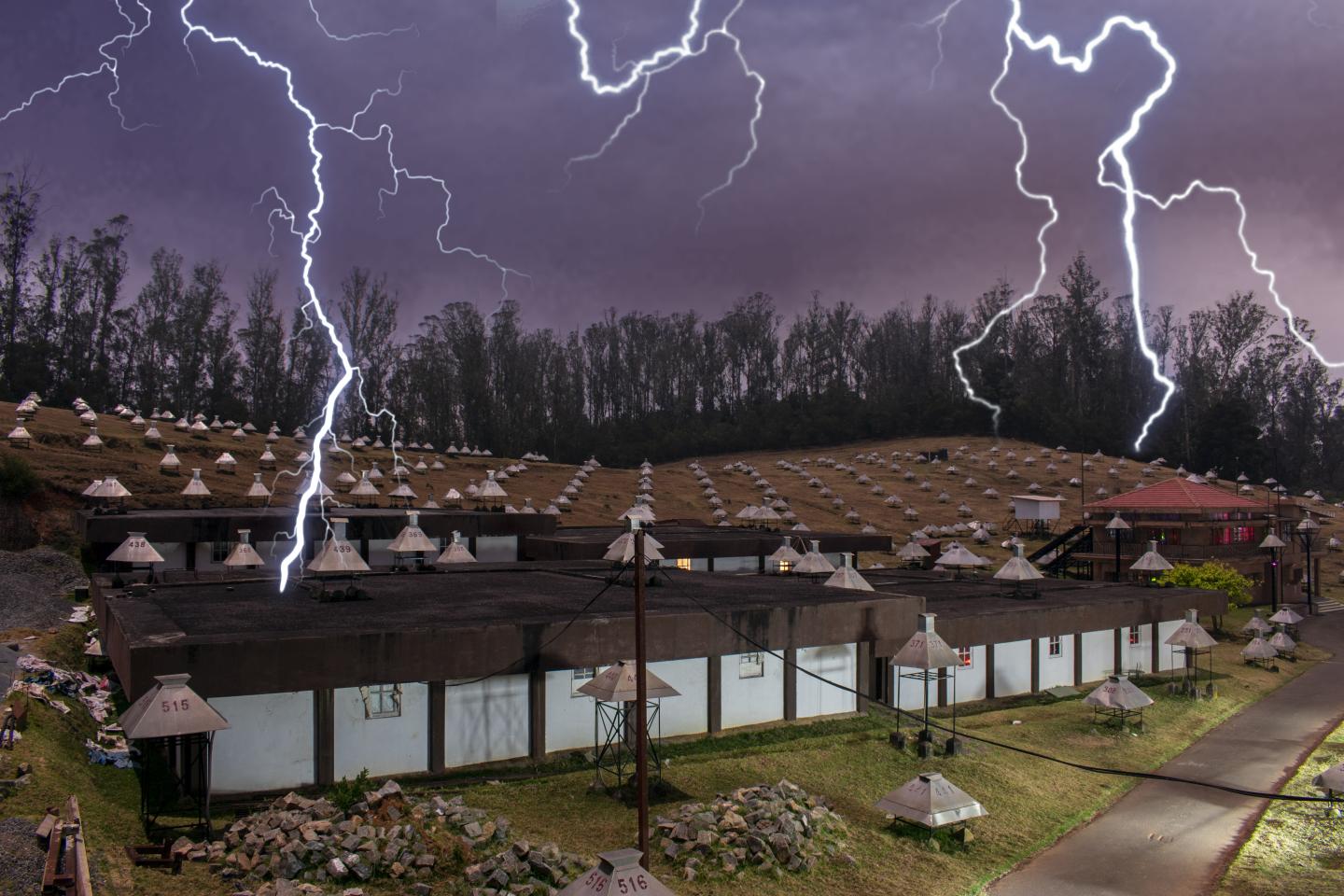
Credit: Pranay Godawat/ GRAPES-3 experiment
Thunderstorms are a spectacular manifestation of electrical discharges of thunderclouds, and have fascinated humans through millennia. There is a dark side of thunderstorms as thousands of lives are lost every year worldwide, making them a leading cause of death by natural disasters. The technique of muon imaging developed by GRAPES-3 collaboration showed that huge voltages develop in supercharged thunderclouds. The voltage produced by a thundercloud on 1 December 2014 in Ooty measured 1,300,000,000 Volts (1.3 GV) across its height, which is 10 times larger than the previous record voltage of 0.13 GV. This verifies the 90-year-old prediction of 1,000,000,000 Volts (1 GV) by C.T.R. Wilson. Such massive voltages are essential for the production of high-energy (100 MeV) gamma rays in the Terrestrial Gamma Ray Flashes (TGFs) emanating from thunderstorms, first discovered 25 years ago.
The GRAPES-3 muon telescope is a sensitive instrument operated by the Cosmic Ray Laboratory of the Tata Institute of Fundamental Research in Udhagamandalam (Ooty) for a collaboration of several institutes and universities from Japan and India. Embedded within an array of plastic scintillator detectors that together constitute GRAPES-3, the experiment is designed to study muons produced by cosmic rays from outer space. The muon intensity changes due to the presence of electric potential in thunderclouds. Therefore, this change in the muon intensity measured by the GRAPES-3 muon telescope can be exploited to estimate the electric potential in the thundercloud.
The data collected by the GRAPES-3 muon telescope show that this particular thunderstorm was a massive (400 sq. km.) cloud, storing about a trillion Joules of energy. Moving at a speed of 60 km per hour at an altitude of 11.4 km — where passenger jets fly — such thunderstorms could pose a serious threat to passenger safety. The >2 GW power supplied by the strong thermal currents sustaining this thunderstorm is comparable to the existing single biggest nuclear reactors or hydroelectric- or thermal power generators. If only this huge energy could be harnessed in some way, it would be sufficient to power a large metro like New York, London or Mumbai for its duration of 18 minutes.
###
Media Contact
Sunil K. Gupta
[email protected]
Related Journal Article
http://dx.




